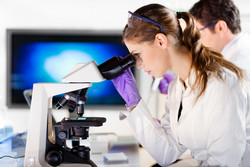Quantifying human nucleoporins
NPC extends across the nuclear envelope, forming a gateway regulating the exchange of molecules between the nucleus and the cytoplasm. NPC consists of approximately 30 building blocks or nucleoporins. Accurate data on NPC composition for generating structural models at atomic resolution are currently lacking. The EU-funded NPCQUANT (Investigation of human nucleoporins stoichiometry and intracellular distribution by quantitative mass spectrometry) project aimed to determine NPC stoichiometry in human cells. The project developed targeted proteomics assays to quantify all the 32 nucleoporins with high accuracy and reproducibility. Through isolation of intact nuclei and nuclear envelope from several cells, researchers measured the stoichiometry of the fully assembled NPC in situ. Its structure was also determined by cryo-electron microscopy. Scientists compared the NPC composition in several cancer cell lines. They found that it varied between the different cancer cell lines via stoichiometric changes of its peripheral components. The project generated stable cell lines expressing inducible microRNAs, targeting different nucleoporins. These cell lines provide valuable tools for structural/functional investigation of single NPC components. NPCQUANT revealed the structure of the NPC scaffold, tackling a long-standing goal in structural biology. In addition, they developed targeted proteomics assays and cell lines that are useful for characterising the functional role of individual nucleoporins in nuclear/cytoplasmic transport.







